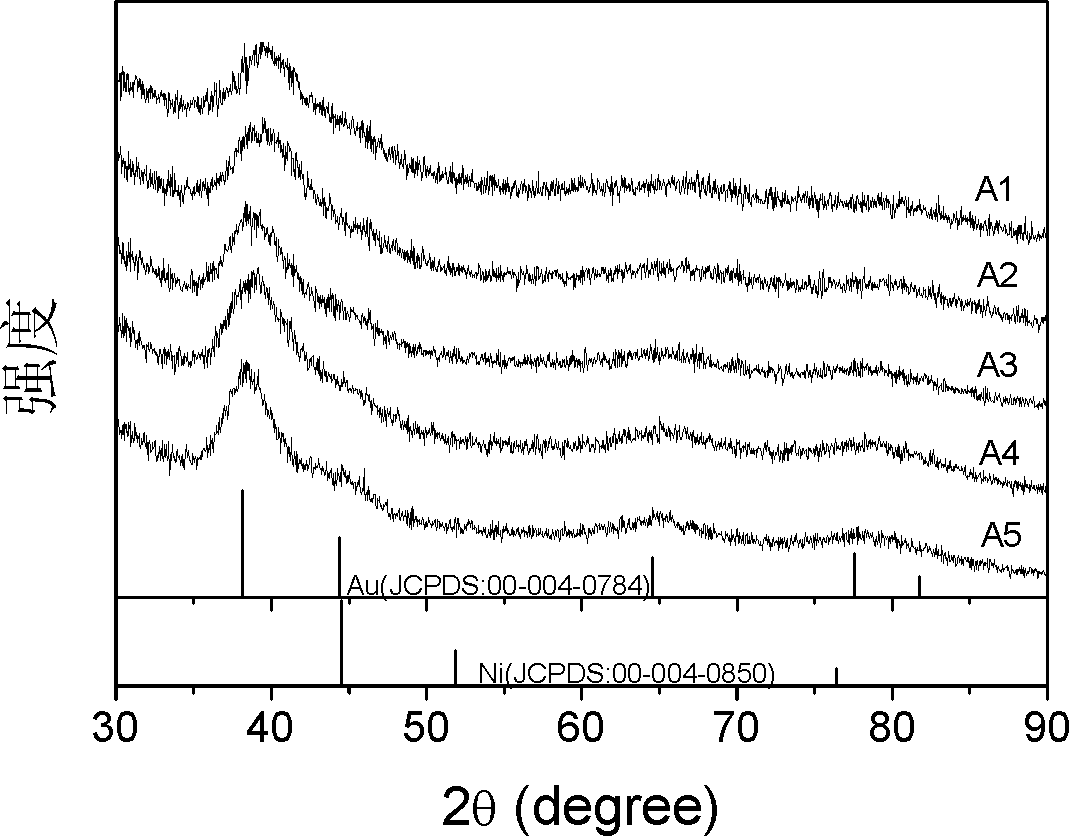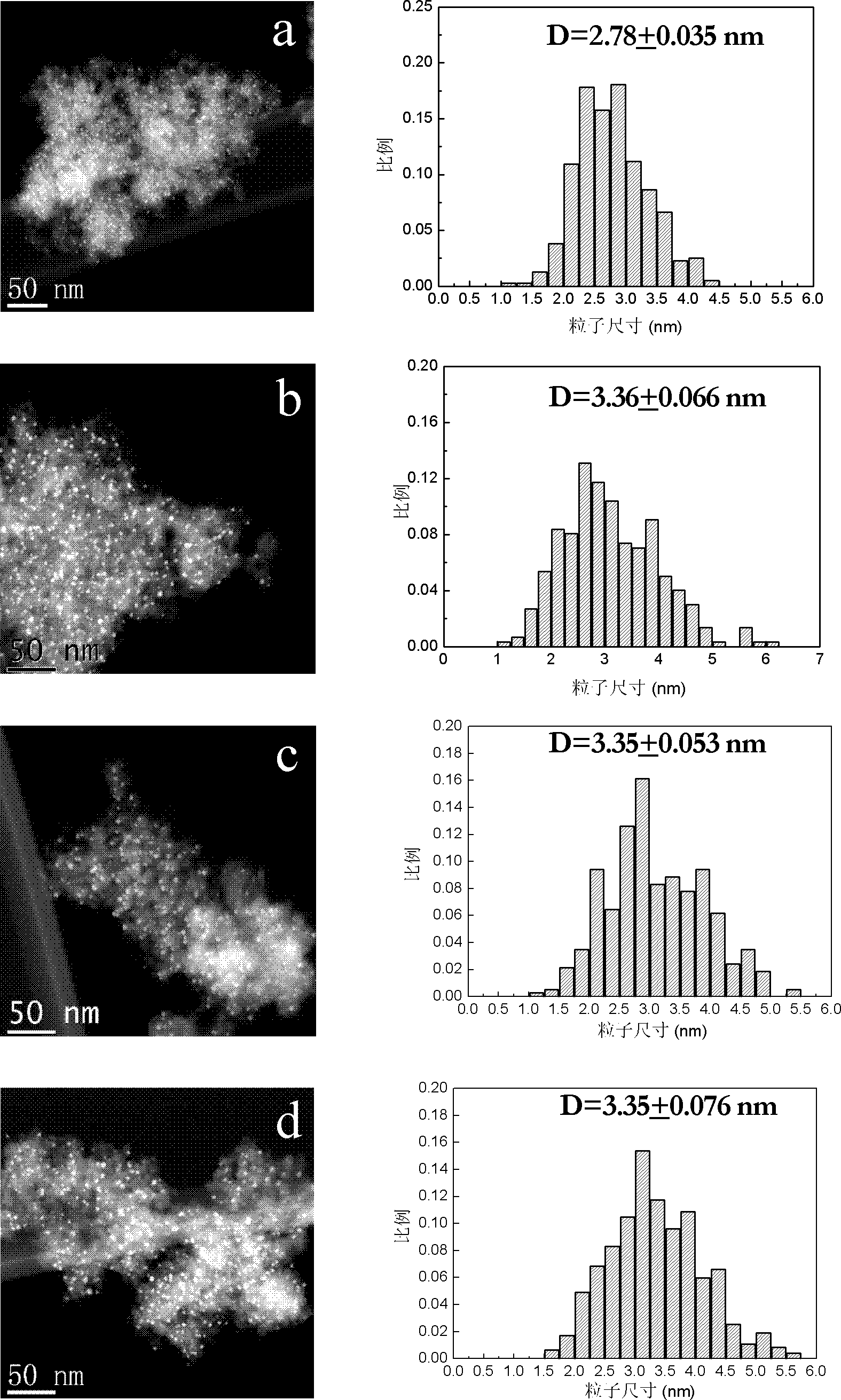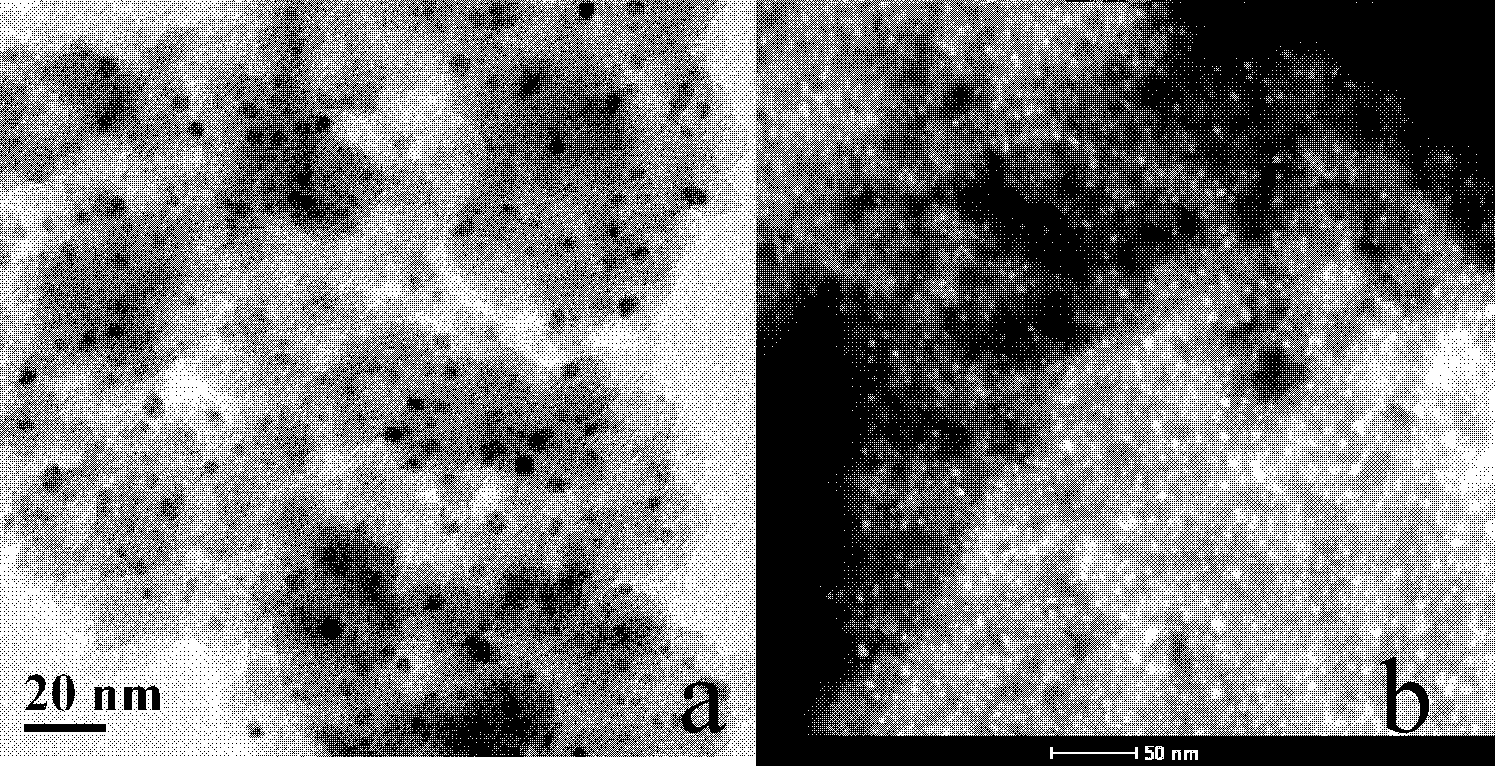Preparation of supported gold-nickel alloy nanocatalyst
A gold-nickel alloy, supported technology, applied in the field of preparation of gold-nickel alloy nano-catalysts, to achieve the effects of narrow particle size distribution, high activity, and saving metal consumption
- Summary
- Abstract
- Description
- Claims
- Application Information
AI Technical Summary
Problems solved by technology
Method used
Image
Examples
Embodiment 1
[0038] SBA-15 with abundant hydroxyl groups on the surface was prepared according to the synthetic method in the literature (Zhao, D.Y.; Huo, Q.S.; Feng, J.L.; Chmelka, B.F.; Stucky, G.D. Journal of the American Chemical Society 1998, 120, 6024-6036). At 40°C, dissolve 2g of P123 in an aqueous solution of 15g of water and 60g of hydrochloric acid (2M). After complete dissolution, add 4.25g of tetraethyl orthosilicate under constant stirring, continue stirring for 24h, and put into the reaction Crystallize in a kettle at 100°C for 48h, filter and dry to obtain white powder SBA-15.
[0039] Put 8g of SBA-15 into a dry three-necked flask, and dry it in an oven at 100°C for 2 hours. %, Acros Organics) was refluxed at 80°C for 24 hours, and then the solid precipitate was filtered and washed with absolute ethanol until no blue flocculent precipitate was detected with copper nitrate. Afterwards, the solid was dried in an oven at 60° C. for 6 hours to obtain the amino-functionalized ...
Embodiment 2
[0041]8g SiO 2 Put it into a dry three-necked flask, dry it in an oven at 100°C for 2 hours, add 400mL of absolute ethanol after cooling down to room temperature, stir well and add 21.2mL of aminotriethoxysilane (3-aminopropyltriethoxysilane, 99%, Acros Organics) Reflux at 80°C for 24 hours, then filter the solid precipitate and wash with absolute ethanol until no blue flocculent precipitate is detected with copper nitrate. Afterwards, the solid was dried in an oven at 60°C for 6 hours to obtain the amino-functionalized carrier SiO 2 -APTES.
Embodiment 3
[0043] Add 16mL of deionized water and 6mL of chloroauric acid aqueous solution containing 9.56mg / mL of gold into a 100mL beaker, stir well at room temperature and then add 1.1118g of SiO 2 - After APTES continued to stir for 30 minutes, it was filtered and washed with 1000 mL of deionized water. The obtained solid was redispersed into a 100 mL beaker filled with 11 mL of deionized water, 11 mL of 0.2M aqueous sodium borohydride solution was added dropwise while stirring at room temperature, stirring was continued for 15 minutes, then filtered and washed with 1000 mL of deionized water. The obtained solid was dispersed into a solution containing 11 mL of deionized water and 0.2540 g of Ni(NO 3 ) 2 ·6H 2 In a beaker of O, add dropwise 0.2M tert-butylaminoborane aqueous solution 30mL while stirring at room temperature, continue to stir for 15 minutes, filter and wash with 1000mL deionized water, dry at room temperature and put it in an oven at 80°C for 12 hours. The catalyzer...
PUM
| Property | Measurement | Unit |
|---|---|---|
| particle size | aaaaa | aaaaa |
Abstract
Description
Claims
Application Information
 Login to View More
Login to View More - R&D
- Intellectual Property
- Life Sciences
- Materials
- Tech Scout
- Unparalleled Data Quality
- Higher Quality Content
- 60% Fewer Hallucinations
Browse by: Latest US Patents, China's latest patents, Technical Efficacy Thesaurus, Application Domain, Technology Topic, Popular Technical Reports.
© 2025 PatSnap. All rights reserved.Legal|Privacy policy|Modern Slavery Act Transparency Statement|Sitemap|About US| Contact US: help@patsnap.com



